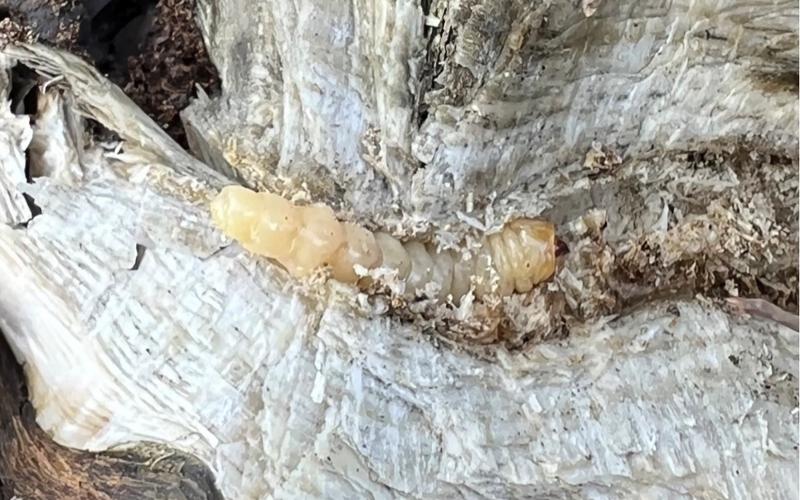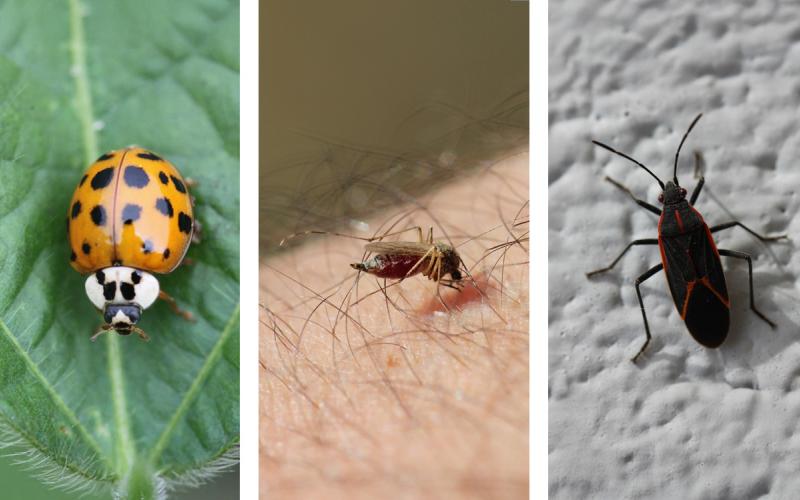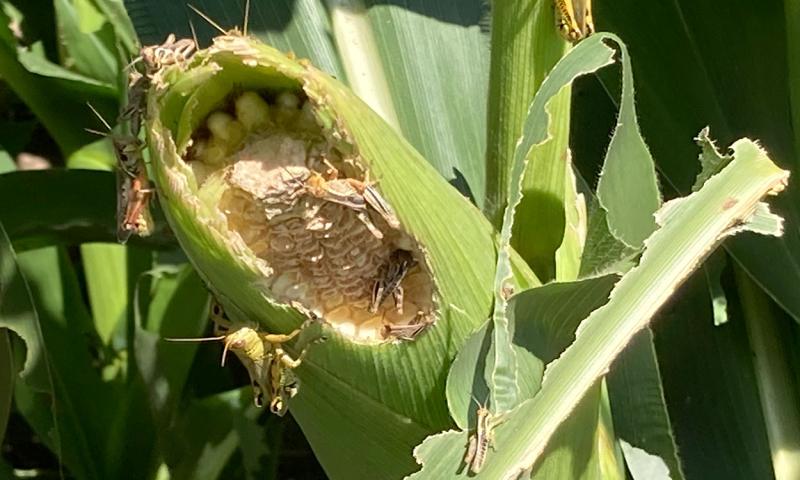
Originally Submitted: August 31, 2023
Throughout the 2023 growing season, grasshopper populations have been causing problems. Those problems aren’t over yet, and we won’t be able to stop monitoring grasshopper activity until the crops are harvested. During the later part of the growing season, grasshoppers become a threat to the harvestable parts of crops. These include pods, ears, and heads for soybean, corn, and sunflower respectively. The harvestable parts of crops will remain viable, even after leaves begin to dry down or after the grasshoppers have defoliated them. Any feeding damage to the harvestable parts of the crop can warrant an insecticide treatment. If large populations of grasshoppers are observed, that treatment may need to occur sooner than later to avoid substantial yield loss.
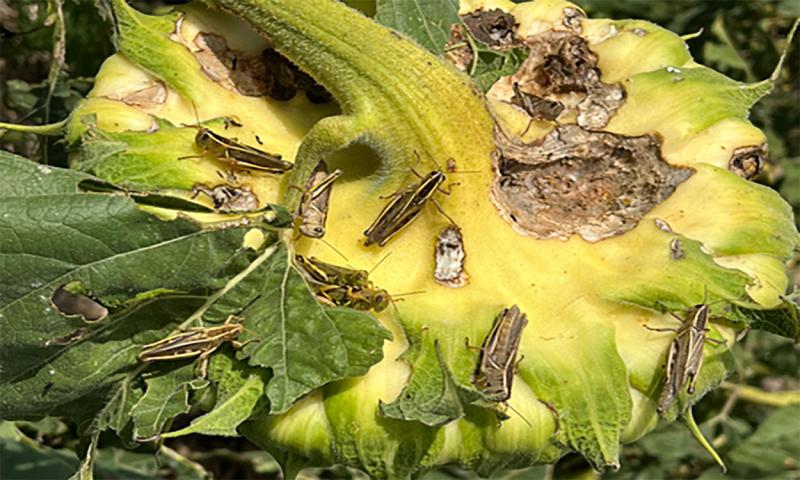
So far, grasshoppers have been observed feeding on corn ears (Figure 1) and sunflower heads (Figure 2).
When making management decisions, its important to determine how far into the field the damage goes, as it is sometimes just the first 100 feet or so that are being damaged by grasshoppers. For these cases, a treatment of the first 100 to 200 feet of the field edge can be adequate. It’s also important to confirm that grasshoppers are still actively feeding before an insecticide application is made.
Scouting and Management Options
For visual counts, estimate a square yard in front of you and count the number of grasshoppers actively feeding on the harvestable parts of the crops.
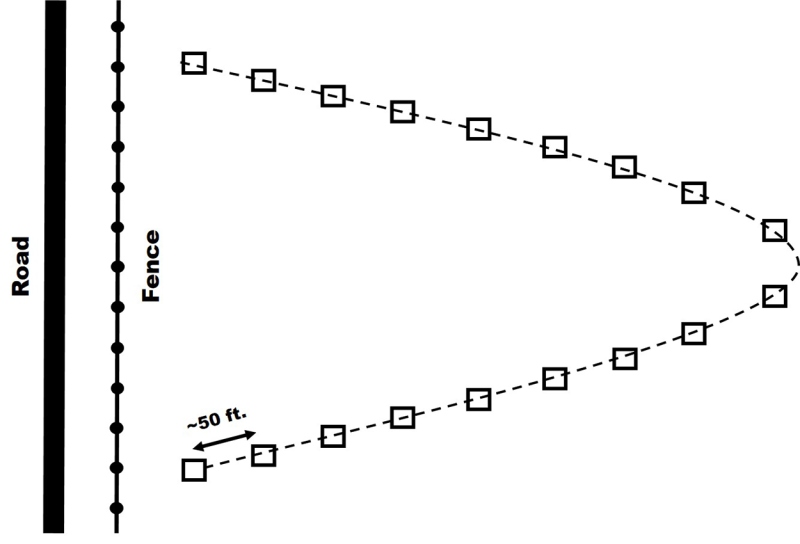
With either sampling method, we recommend repeating it several times in a pattern, such as the example in Figure 3, and calculating the average for increased accuracy.
The threshold for grasshopper populations that was established by the U.S. Department of Agriculture for grasslands is 15 to 20 nymphs or 8 to 10 adults per square yard.
If grasshoppers are observed actively feeding on the pods, ears or heads, an insecticide that is labeled for grasshopper management may be considered. A current list of insecticide sprays for use can be found in the latest South Dakota Pest Management Guides.

